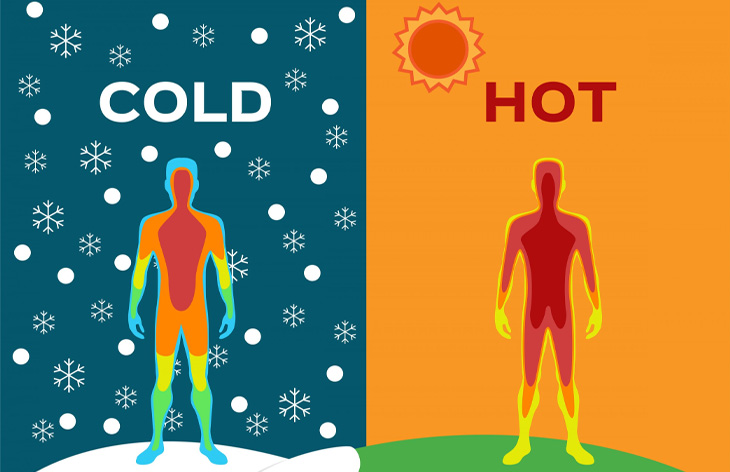The winter season has gained momentum. Fingers go numb, Ears get cold. Why does all this happen? Have you ever wondered why we feel cold? Why does it suddenly seem like a lot? Why do some feel less and some feel more cold?
Every person feels cold according to the food, lifestyle and internal capacity of the body. But where do you feel the onset of cold first? Do you know? Cold is first felt on the skin. When the temperature drops, the first protective circle of the body, that is, the skin, feels it. Thermo-receptor nerves present just under the skin send messages to the brain in the form of waves that one is feeling cold. This simple feeling occurs at different levels and intensity in different human body.
When the skin gets cold, whole body start to recover. The story behind this is that the waves emanating from the skin reach the hypothalamus of the brain. The hypothalamus itself balances the internal temperature of the body and the environment. Because the muscles under them start shrinking. The layer of hair present on the body helps to protect you from cold.
The hypothalamus tells the nervous system of the body that a drop in body temperature is felt. This is important information because our body cannot tolerate the fall in temperature. If the temperature drops too low, then many organs will stop working. A person can die due to multi organ failure. That is, due to excessive cold which is called hypothermia, people die.
So even if you feel cold on your skin, but the brain prevents the temperature inside the body from falling. The brain warns the whole body that the temperature is falling, you have to balance the temperature. Therefore all the organs, muscles slow down the speed of their work.
Slow working organs produce more metabolic heat, which keeps the area around the organ warm without going to other places. This is where there is a sudden shiver in your body. Or sometimes there is tremor in many waves. Shivering means that your body is balancing the temperature inside with the temperature outside.
When you start shivering or trembling, then your blood vessels constrict, preventing the flow of blood and its heat to the body parts. Prevents them from reaching the cold skin. This keeps you safe. In such a situation, your body parts remain warm but the skin may feel cold. But this method is to keep the body temperature balanced.
Surprisingly, when we repeatedly deal with cold temperatures, our body immediately starts balancing accordingly. It is a different matter in the exact opposite situation. As soon as the temperature of the body or outside becomes favorable to each other, we stop feeling cold. In such a situation, that activity of your body stops, due to which the internal temperature of the body was being balanced.
There are many research papers that say that gender, age and genes also depend on how cold a person will feel. Because just as the size of people’s shoes are different from each other, in the same way the number of thermometer sensors present in them can also be different. Also their ability to feel cold is also different.
There is also a claim that elderly people do not shiver until the temperature drops too low. Whereas, young people start shivering at the slightest drop in temperature. This is because the ability of the elderly to feel cold decreases with age as compared to the younger ones.

![Basant Panchami 2025: Know the correct date and auspicious time [TKB INDIA]](https://topknowledgebox.com/iphaphoo/2025/01/31012025-150x150.jpg)

![Amazing feature of WhatsApp, you will be able to reply without listening to the voice message[TKB Tech]](https://topknowledgebox.com/iphaphoo/2024/11/24112024-150x150.jpg)
![Essential Oil For Skin[TKB Health]](https://topknowledgebox.com/iphaphoo/2024/10/16102024-150x150.jpg)
![Janmashtami 2024 [TKB INDIA]](https://topknowledgebox.com/iphaphoo/2024/08/26082024-150x150.jpg)





More Stories
Essential Oil For Skin[TKB Health]
Chia seeds will give double benefits [TKB Health]
Sunglasses Choosing Tips: Keep note before buying sunglasses, otherwise your eyes may get damaged! [TKB Health]